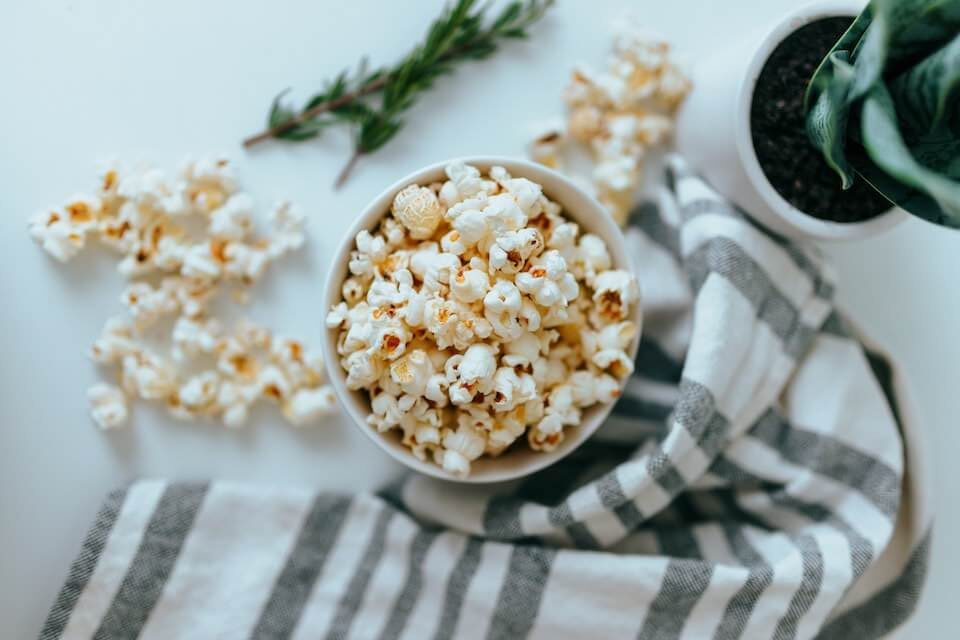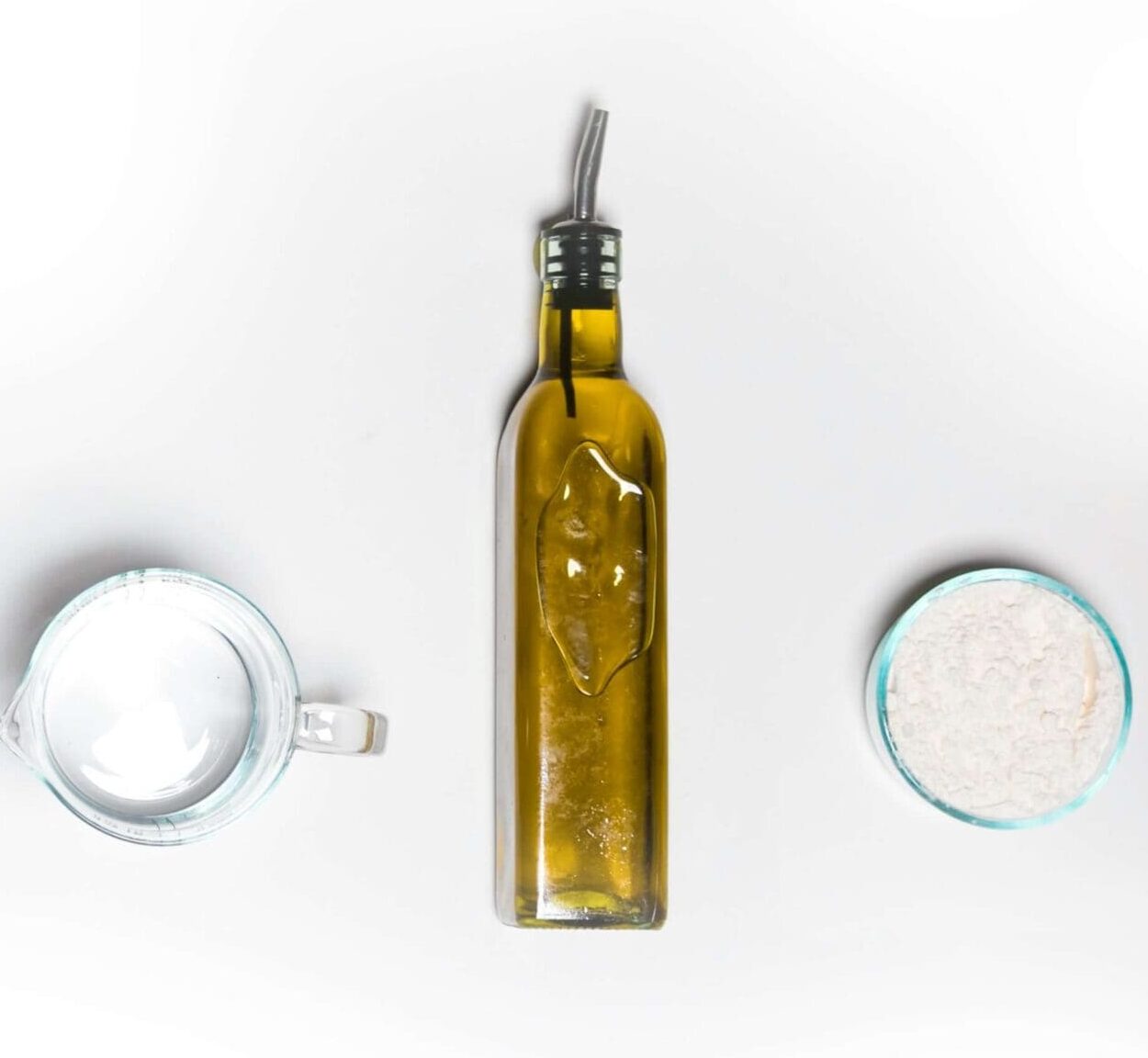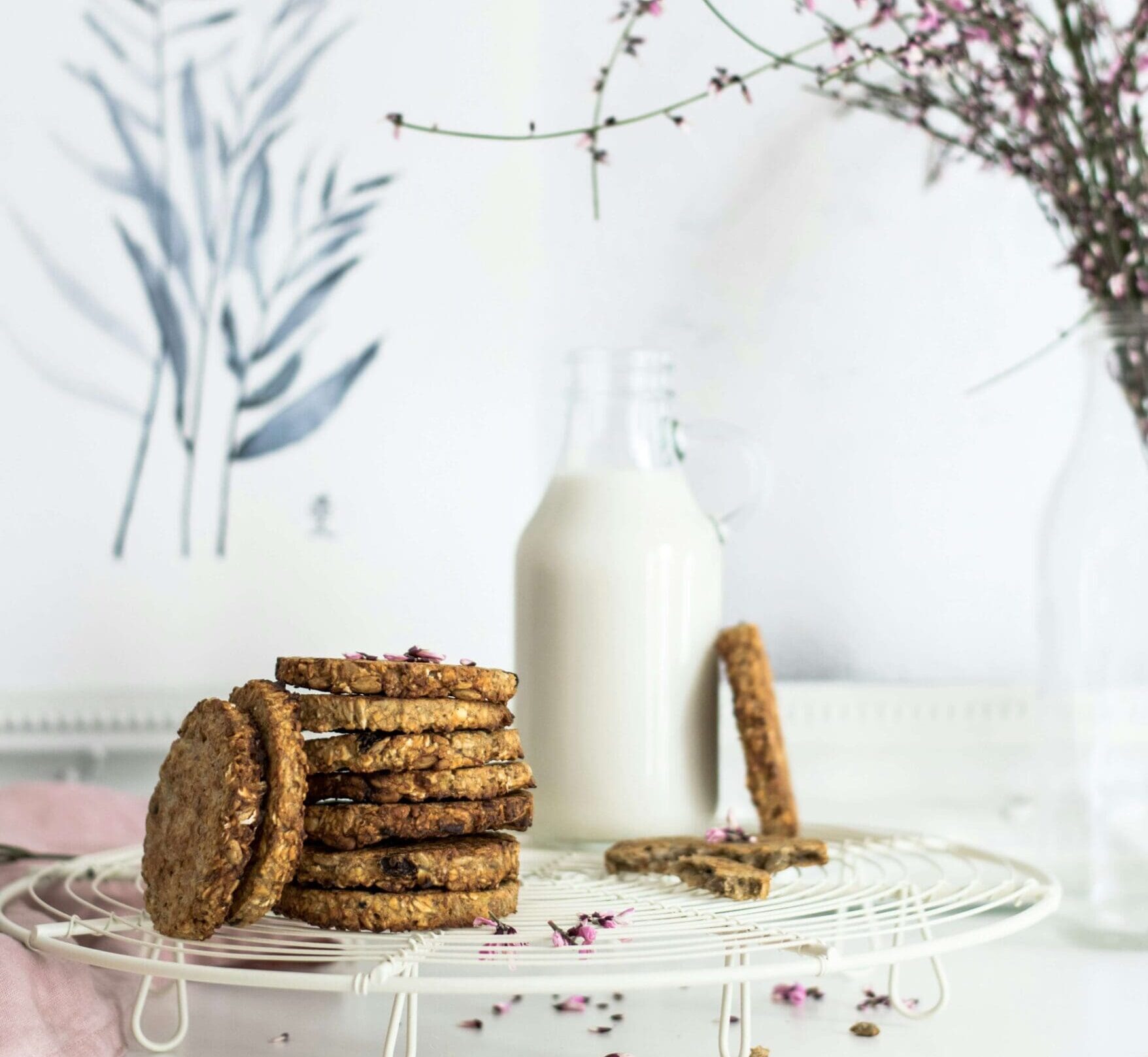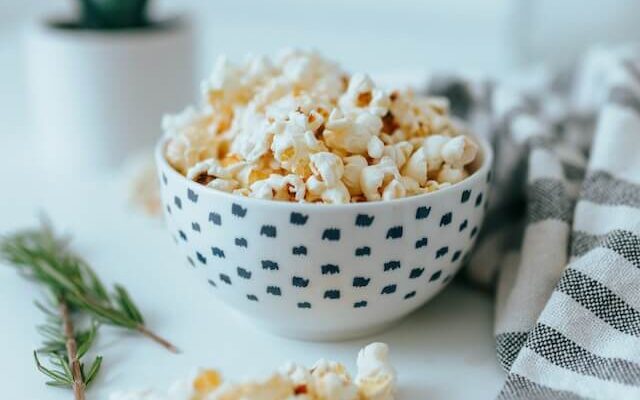
Hello friend!
Today we are going to be talking about one of the most popular snack choices out there: popcorn.
This food can easily be lumped in with other “junk” foods, typically due to the ingredients added to it, but on its own, popcorn is a nutritious and tasty snack
One of the most common questions I get asked as an oncology dietitian is
“Can I eat microwave popcorn?”
The answer: YES! Popcorn is a great snack, and it even has some cancer fighting benefits. This response tends to strike controversy since some people claim that popcorn actually increases risk.
Popcorn’s Bad Reputation
Over the last several years, popcorn has gotten somewhat of a bad name. This isn’t necessarily due to anything from the popcorn itself, but rather from chemicals used in the popcorn bag lining known as perfluorinated compounds (PFCs). These chemicals were also found in pizza boxes, and other food packaging materials. They were optimal for resisting grease, oil, water, and stains, preventing oil from seeping through popcorn bags and putting a damper on your movie night. Unfortunately, since these synthetic chemicals were made to prevent breakdown, they can last in the environment for a very long time. Many people have raised concerns about how this may impact human health and have urged for the removal of these substances from food packages and other sources.
Fortunately, these substances have been banned from use by the FDA in food packages and replaced by substances that break down quicker. Some people still have their reservations about the substitute chemical and believe it still poses a health threat. If you are concerned, consider switching to popping your own popcorn on the stove-top or only occasionally using the microwave variety.
Benefits of popcorn
Micronutrient Dense
Popcorn is considered a “nutrient dense” food. Some of the micronutrients in popcorn include the following:
- Niacin
- Iron
- Magnesium
- Phosphorus
- Zinc
- Manganese
High In Polyphenols
This humble snack’s high polyphenol content makes it an excellent choice to include as part of a cancer prevention diet since polyphenols regulate the growth of cancer cells by blocking certain enzymes.
High in Fiber
Did you know that popcorn is a whole grain? That means it is a grain that has not been processed to remove the high-fiber components. In just one serving of popcorn (about three cups), you get almost 4 grams of dietary fiber! That’s over 10% of the recommended amount! Adequate fiber intake may help reduce your risk of colon cancer. Not bad for a snack!
Low in Calories
Since this snack has decent volume per serving size (one 3 cup serving provides roughly 100 calories), it may help people meet their weight loss goals. The large volume and fiber content also makes popcorn a filling snack option and may help prevent people from over-eating. To make it even more filling, pair it with some protein and a healthy fat for a snack that actually fills you up!
How to Make Your Own
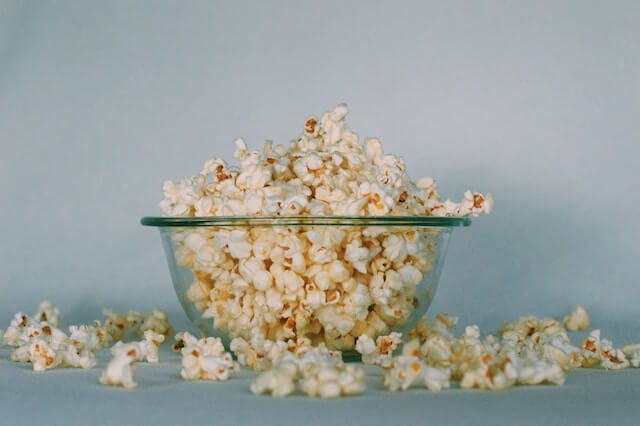
It can feel intimidating to make your own popcorn. The key is to make sure you don’t turn the heat on too high and don’t leave an unattended burner, especially with hot oil!
All you need is:
- 1/2 cup of Popcorn kernels
- A large heavy-bottom pot (with a lid)
- 1-2 tablespoons of oil (olive or coconut)
- Toppings!
Directions:
- For four servings, add two tablespoons of oil to your pot on medium heat and allow it to heat up. Add two popcorn kernels to test the heat. Position your lid so it is cracked. This will keep your popcorn from flying everywhere while also preventing it from getting soggy. Once those test kernels pop, you know it’s hot enough.
- Remove from heat and add the rest of your kernels. Cover slightly with the cracked lid and wait about a minute before placing back on the heat.
- Swirl your pot to distribute the kernels and listen as they pop. If your pot overflows, carefully remove from heat and tip the popped popcorn from the top into a bowl while still keeping the lid tipped.
- You know its about done when the popping sound is more spread out. Turn off heat and allow to cool slightly.
- Pour out into a bowl and add your toppings!
The Toppings
What to Look Out For
Although the popcorn itself can be a nutrient dense snack option, some popular toppings may not be the healthiest option. Certain varieties of commercially available popcorn can be high in sodium and saturated fat. In fact, some can deliver almost 20% of your daily value for sodium and saturated fat in just one serving. Although this may not be an issue if you enjoy it on occasion, it may be something to reconsider if it’s a daily staple for you. Thankfully, many brands today, like Skinny Pop, cater to people who are trying to limit their saturated fat intake. You can also find “reduced sodium” varieties on the market.
Use Your Own Toppings
Just because popcorn is nutritious on its own does NOT mean you have to eat it bland! You can come up with topping ideas that are delicious while also providing nutrients to keep your body healthy. Get creative with what you use!
Some popcorn toppings/combos include:
- South-east Asia Inspired: curry, black pepper, cumin, turmeric, pinch of salt
- Seaweed – crumble over your popcorn to give it a slightly salty flavor while also getting some iodine and antioxidants
- Chili powder, garlic powder, onion powder, cumin, pinch of salt
- Grated parmesan cheese
- Nutritional yeast
- Cinnamon
- Cocoa powder
- Nut butter drizzle
- Dark chocolate shavings
Closing
Popcorn may have been under scrutiny, but today you are welcome to choose it as part of a cancer prevention snack for its high fiber content, polyphenols, and yummy taste!
When you join my Cancer Simplified Membership, you get exclusive, simple content, updated monthly about how to crush the confusion around cancer, enjoy ALL the foods, and go back to living your best life. I am so excited for you to join! Click here to snag your spot for my Cancer Simplified Membership!
References
- World Cancer Research Fund/American Institute of Cancer Research. Continuous Update Project Expert Report 2018. Other dietary exposures and the risk of cancer. Available at dietandcancerreport.com.
- PFCs factsheet – CDC. https://www.cdc.gov/biomonitoring/pdf/PFCs_FactSheet.pdf. Published November 2009. Accessed April 21, 2023.
- Perfluorochemicals. Center for Disease Control. https://www.cdc.gov/biomonitoring/PFAS_BiomonitoringSummary.html. Published April 7, 2017. Accessed April 21, 2023.
- Popcorn as a snack: Healthy hit or dietary horror show? American Heart Association. https://www.heart.org/en/news/2019/06/18/popcorn-as-a-snack-healthy-hit-or-dietary-horror-show. Published June 18, 2019. Accessed April 21, 2023.
- McDonnell K. Popcorn nutrition facts: A healthy, low-calorie snack? Healthline. https://www.healthline.com/nutrition/popcorn-nutrition-and-health. Published June 17, 2017. Accessed April 21, 2023.
- Wang J, Tang L, Wang J-S. Biomarkers of dietary polyphenols in cancer studies: Current evidence and beyond. Oxid Med Cell Longev. 2015;2015:1-14. doi:10.1155/2015/732302
This blog is not intended as medical nutrition therapy, medical advice, or diagnosis and should in no way replace consultation or recommendations from your medical professional.
